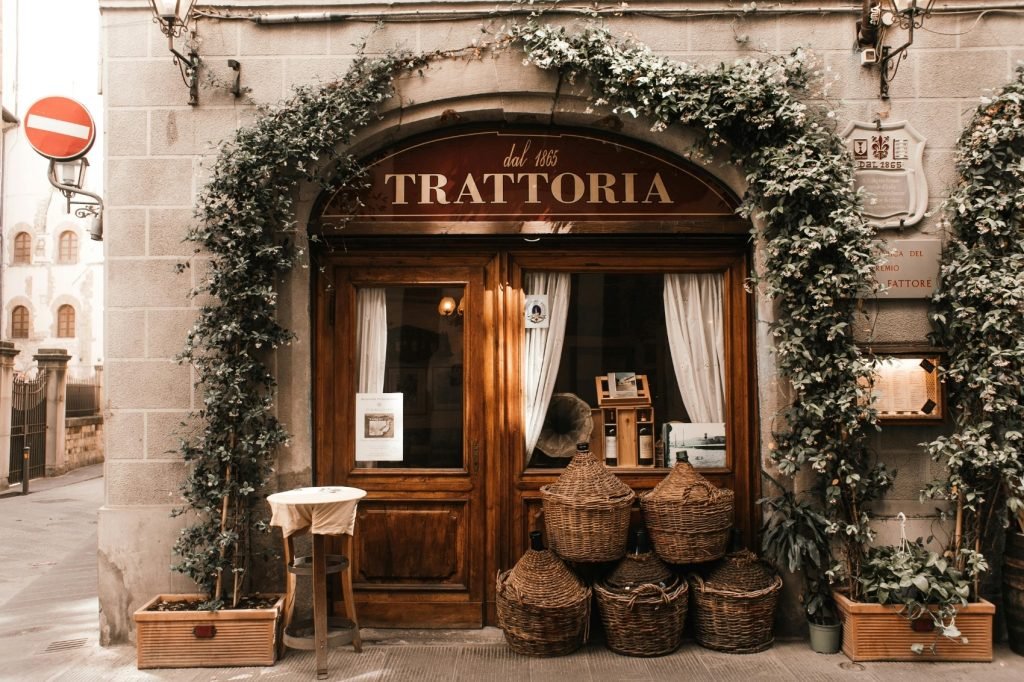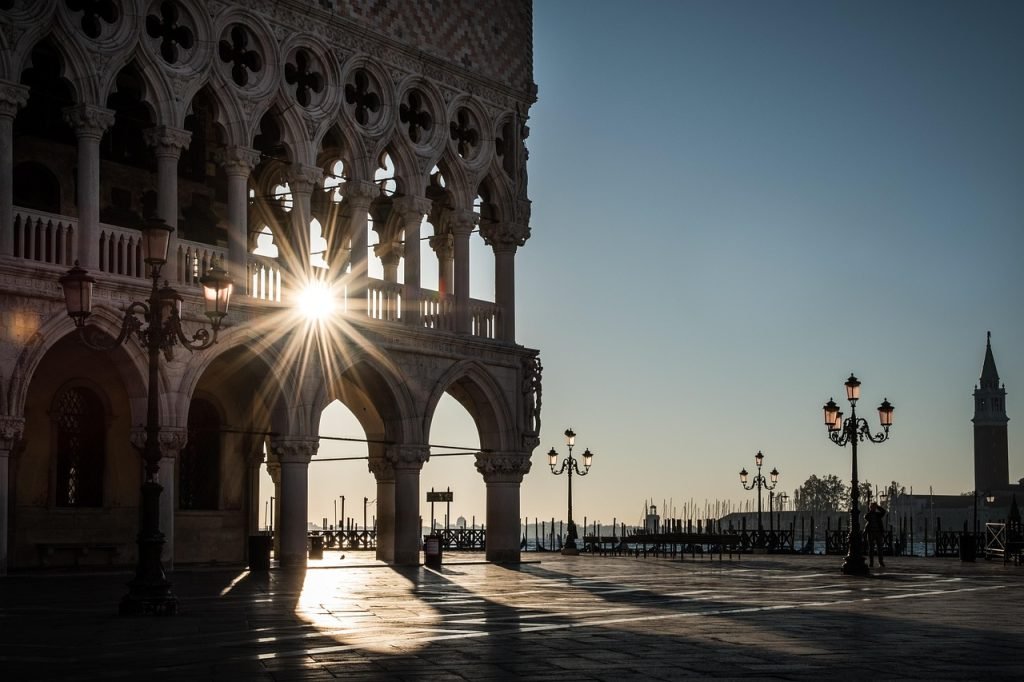Picture this: You’re sitting in a charming Roman trattoria, the aroma of garlic and basil wafting through the air, when suddenly you commit the ultimate Italian dining sin—ordering a cappuccino after your osso buco. The waiter’s polite smile falters, nearby Italians exchange knowing glances, and you’ve just branded yourself as a tourist more effectively than wearing a fanny pack and carrying a selfie stick.
Italian food culture isn’t just about incredible flavors and time-honored recipes—it’s a complex tapestry of unwritten rules, deeply held traditions, and passionate respect for culinary heritage that spans millennia. To truly experience Italy like a local, you need to understand that dining here is an art form, a social ritual, and occasionally, a minefield of cultural expectations that can make or break your authentic Italian experience.
The Sacred Timing of Italian Meals: When Romans Do as Romans Do
Morning Rituals: The Cappuccino Commandments
Let’s address the elephant in the room—or should I say, the cappuccino in the evening. In Italy, cappuccino is strictly a morning beverage, consumed standing at the bar counter, preferably before 11 AM. This isn’t arbitrary snobbery; it’s rooted in the Italian belief that milk-based drinks interfere with digestion, making them inappropriate after meals.
Watch any Italian morning routine: they’ll stride into their local bar (which, confusingly for tourists, serves coffee, not alcohol), order their cappuccino and cornetto (never a croissant—that’s French), consume both while standing and chatting with the barista, then continue with their day. The entire interaction lasts maybe five minutes, but it’s a cornerstone of Italian social life.
If you must have milk in your coffee after lunch or dinner, ask for a caffè macchiato—a small espresso with just a dollop of foamed milk. Better yet, embrace the Italian way: a simple espresso, knocked back in two sips while standing at the counter, costs around €1-1.50 and provides the perfect punctuation mark to any meal.
Lunch and Dinner: The Italian Timeline
Italians eat lunch (pranzo) between 12:30 and 2:30 PM, with many businesses closing during this sacred time. Dinner (cena) doesn’t even begin until 7:30 PM in the north, and as late as 9:30 PM in the south. Arriving at a restaurant at 6 PM will likely result in confused stares and possibly locked doors.
This timing isn’t just cultural preference—it’s practical wisdom developed over centuries. The afternoon heat makes heavy meals uncomfortable, while the cooler evening hours provide the perfect atmosphere for leisurely dining and conversation.
Navigating the Mysterious Coperto: Italy’s Table Tax Explained
One of the most bewildering aspects of dining in Italy for newcomers is the coperto—a cover charge that appears on virtually every restaurant bill. Ranging from €1.50 to €5 per person depending on the establishment’s caliber and location, this fee covers bread, table service, and the privilege of occupying the table.
Here’s what tourists need to understand: the coperto isn’t a scam or tourist trap—it’s a centuries-old tradition that allows restaurants to offer lower food prices while covering basic service costs. The bread that arrives automatically at your table isn’t free, but it’s already paid for through the coperto. Don’t expect unlimited refills of bread baskets like in American restaurants; instead, savor the typically excellent quality of what you receive.
Some restaurants, particularly in tourist-heavy areas, may try to charge both coperto and servizio (service charge). This is where you need to channel your inner Italian and question the bill. Legitimate establishments will explain their pricing structure clearly, while tourist traps will often remove the duplicate charge when challenged politely but firmly.
The Art of Italian Tipping: Less is More, Respect is Everything
Italian tipping culture operates on completely different principles than American expectations. Service staff receive living wages, making tipping supplementary rather than essential for survival. This creates a refreshing dynamic where servers provide genuine hospitality rather than performance-driven attention.
For exceptional service at a mid-range restaurant, leaving €5-10 for a party of four is generous. At high-end establishments, 5-10% demonstrates appreciation without appearing ostentatious. However, rounding up the bill or leaving small change (€1-2) is perfectly acceptable and often expected.
More importantly, Italians value respect and appreciation over monetary tips. Learning basic Italian phrases like “grazie mille” (thank you very much), “complimenti allo chef” (compliments to the chef), or “tutto perfetto” (everything was perfect) will endear you to staff far more than overtipping ever could.
Never leave coins scattered on the table—this appears dismissive and disrespectful. Either hand the tip directly to your server or place it neatly under your plate when settling the bill.
The Unbreakable Rules: What Never to Do
Italian cuisine represents regional identity, family heritage, and cultural pride distilled into every dish. This creates an almost religious reverence for traditional preparations that can shock visitors accustomed to “customer is always right” mentalities.
Prosciutto Blasphemy
Never, ever add oil to prosciutto. This premium cured meat has been aged and perfected over months or years—adding oil masks its delicate flavors and insults the producer’s craftsmanship. Prosciutto should be eaten as-is, perhaps with melon or figs, but never drowned in oil.
The Cheese and Fish Taboo
Cheese on fish dishes is virtually non-existent in Italian cuisine. The combination is considered to overpower the delicate flavors of seafood. If a restaurant offers parmesan for your seafood pasta, you’re likely in a tourist trap rather than an authentic establishment.
The Carbonara Commandments
Carbonara consists of exactly five ingredients: guanciale (cured pork jowl), eggs, Pecorino Romano cheese, black pepper, and pasta—traditionally spaghetti or tonnarelli. Requesting modifications isn’t just frowned upon; it’s considered culturally insensitive, like asking Michelangelo to add more arms to David.
No cream. No peas. Repeat with me. No mushrooms. No chicken. These additions, common in international “carbonara” variations, are viewed as bastardizations of a perfect Roman recipe developed over generations. The dish’s beauty lies in its simplicity and the technique required to create silky, creamy texture using only eggs and cheese.
When you order carbonara, you’re not just ordering dinner—you’re participating in a culinary tradition that connects you to Roman trattorias, neighborhood nonnas, and centuries of perfected technique. Respect this legacy by ordering it as intended or choosing something else entirely.
The Pineapple Pizza Paradox
While we’re discussing culinary respect, let’s address the international elephant in the room: pineapple on pizza. Italian reactions to this combination range from bemused confusion to genuine offense. Pizza, invented in Naples, represents Italian culinary creativity and regional pride. Adding tropical fruit feels, to many Italians, like putting ketchup on aged Parmigiano-Reggiano—technically possible but culturally tone-deaf.
Instead, explore authentic Italian pizza variations: Margherita with San Marzano tomatoes, fresh mozzarella, and basil; Marinara with tomatoes, garlic, and oregano; or regional specialties like Pizza al Taglio in Rome or Sfincione in Sicily.
The Bistecca Fiorentina Experience: Embracing Blood and Tradition
Ordering bistecca alla fiorentina represents one of Italy’s most intense culinary experiences and cultural tests. This massive T-bone steak, typically weighing 800-1200 grams and serving 2-3 people, traditionally arrives cooked al sangue (bloody rare), though some establishments may accommodate medium doneness upon request.
The meat comes from Chianina cattle, an ancient Tuscan breed producing incredibly flavorful, tender beef. The steak is grilled over chestnut wood, seasoned only with salt, pepper, and perhaps a drizzle of excellent Tuscan olive oil. The exterior develops a beautiful crust while the interior remains ruby red and nearly raw.
However, requesting well-done will likely result in the chef refusing to prepare the dish, especially in Tuscany where this tradition is most sacred. This isn’t stubbornness; it’s protecting culinary integrity. A well-done bistecca fiorentina destroys the meat’s natural flavors and textures, making it an expensive mistake rather than a celebrated dish.
If you’re uncomfortable eating rare beef, order something else. Florence offers incredible alternatives: ribollita (hearty vegetable soup), pici cacio e pepe (hand-rolled pasta with cheese and pepper), or cinghiale (wild boar stew). But if you’re feeling adventurous, trust Tuscan tradition and experience one of Italy’s most primal and delicious dishes exactly as intended.
Tourist Trap Menu Red Flags: How to Spot Inauthentic Establishments
Certain menu items serve as immediate warnings that you’ve wandered into a tourist trap rather than an authentic Italian establishment:
Spaghetti Bolognese: While Italians do eat spaghetti with ragù at home (it’s a fusion of Italy’s most common pasta with its most common sauce), seeing this on a restaurant menu screams “tourist trap.” Authentic Bolognese restaurants serve ragù with tagliatelle, the traditional pairing that allows the sauce to cling properly to the pasta.
Spaghetti and Meatballs: This abomination represents everything wrong with Italian-American fusion cuisine. Italians never combine primi (pasta) with secondi (meat courses) in a single dish. Meatballs (polpette) are eaten as a separate course, not mixed with pasta.
Any pasta with ketchup: Ketchup is banned from Italian cuisine except in establishments serving hamburgers and fries—a dead giveaway that you’re not in a place serving authentic Italian food.
If you spot these items, especially multiple offenders on the same menu, run for your life. You’re in a tourist trap that will serve mediocre food at inflated prices while completely missing the authentic Italian experience you’re seeking.
Reading the Italian Dining Landscape: Restaurant Categories and Expectations
Osteria, Trattoria, Ristorante: Understanding the Hierarchy
Italian dining establishments follow a traditional hierarchy that affects everything from pricing to atmosphere to expected behavior:
Osteria: Originally wine shops serving simple food, modern osterie offer casual dining with excellent local wines and traditional dishes. Expect paper tablecloths, individual tables (shared tables are rare except in mountain rifugi), and prices reflecting honest, neighborhood values. However, beware: these traditional names are easily exploited by tourist traps, so always check recent reviews before dining.
Trattoria: Family-run restaurants serving regional specialties in comfortable, unpretentious settings. These establishments often lack printed menus, instead relying on servers to recite daily offerings based on seasonal ingredients and traditional preparations. Again, verify authenticity through reviews—the romantic “trattoria” name attracts tourist-focused imitators.
Agriturismo: Working farms that serve meals using their own produce and local ingredients. These represent some of Italy’s most authentic dining experiences, offering genuine farm-to-table cuisine often prepared by farming families. Expect seasonal menus, rustic settings, and ingredients that traveled meters rather than miles from source to plate.
Ristorante: Formal dining establishments with printed menus, professional service, and higher prices reflecting refined preparation and presentation. These venues require more formal behavior and dress codes.
Decoding Italian Menus: The Structure of Dining
Italian meals follow a specific structure that maximizes flavor progression and digestive comfort:
Antipasti: Appetizers designed to stimulate appetite without filling the stomach. Think cured meats, cheeses, marinated vegetables, or crudo preparations.
Primi Piatti: First courses, typically pasta, risotto, or soup. These dishes are substantial main courses in themselves, not appetizers or side dishes as sometimes misunderstood abroad. Risotto, in particular, is a complete primo dish requiring the same respect and attention as any pasta course.
Secondi Piatti: Main courses featuring meat, fish, or substantial vegetarian preparations. Unlike American “entrées,” these dishes often lack side dishes or vegetables.
Contorni: Side dishes ordered separately to accompany secondi. Vegetables, potatoes, or salads chosen to complement main course flavors.
Dolci: Desserts, though many Italians prefer finishing meals with fresh fruit, especially during summer months.
You’re not expected to order every course, but understanding the structure helps you navigate menus and create balanced meals that follow Italian logic rather than fighting against it.
The Philosophy of Italian Dining: Slow Food, Deep Connections
Italian food culture embodies the Slow Food movement’s principles long before the term existed. Meals represent opportunities for connection, conversation, and appreciation rather than mere fuel consumption. Tables are held for entire evenings, conversations flow between courses, and rushing through dinner is considered almost offensive.
This philosophy extends to ingredient appreciation. Italians discuss tomato varieties with the passion Americans reserve for sports teams. They know their local producers, understand seasonal availability, and view cooking as connecting with agricultural heritage rather than merely combining ingredients.
When dining in Italy, embrace this mindset. Taste each component of your dishes. Ask your server about ingredient origins. Express appreciation for preparation techniques. Your enthusiasm for authentic Italian culture will be warmly received and often rewarded with insider recommendations and special treatment.
Regional Pride: Why Location Matters More Than You Think
Italy’s political unification occurred relatively recently (1861), meaning regional food cultures developed independently for centuries. A Roman’s pasta carbonara differs significantly from a Neapolitan’s pizza margherita, and both take immense pride in their local specialties.
When in Rome, order Roman dishes: cacio e pepe, amatriciana, carbonara, or supplì. In Naples, focus on pizza, ragù, and seafood preparations. In Bologna, embrace tagliatelle al ragù (never spaghetti Bolognese), tortellini in brodo, and mortadella.
Ordering regional dishes while visiting their birthplaces demonstrates respect for local culture and ensures you’re experiencing authentic preparations perfected over generations. A Roman chef’s carbonara will always surpass a Milanese interpretation, just as Neapolitan pizza remains unmatched outside its homeland.
Practical Tips for Dining Success
Wine Etiquette and Selection
Italian wine culture prioritizes food pairing over prestigious labels. House wines (vino della casa) often represent excellent value and careful selection by restaurant owners who stake their reputation on quality. Don’t hesitate to ask for recommendations based on your meal choices.
Wine by the glass is less common than in other countries. Most Italians order half-bottles (mezza bottiglia) or full bottles, viewing wine as integral to the complete dining experience rather than an afterthought.
Payment and Service Expectations
Credit cards are widely accepted in restaurants, but smaller establishments may prefer cash. Always confirm payment options when making reservations or upon arrival.
Service operates at Italian pace, meaning courses arrive with proper intervals for digestion and conversation. Don’t expect rapid American-style efficiency; instead, appreciate the relaxed tempo that allows proper enjoyment of each dish.
If you need to leave quickly, inform your server when ordering. Most establishments will accommodate faster service when requested politely and in advance.
Conclusion: Embracing the Italian Way
Eating like a local in Italy requires more than knowing which fork to use—it demands understanding and respecting cultural values that treat food as art, tradition, and social connection. The coperto isn’t a tourist tax but a centuries-old custom. Cappuccino timing isn’t arbitrary but reflects digestive wisdom. Carbonara’s rigid preparation standards aren’t stubborn tradition but cultural preservation.
By embracing these customs rather than fighting them, you’ll discover that Italian dining offers far more than excellent food—it provides genuine cultural immersion, meaningful connections with locals, and memories that extend far beyond your plate.
Remember: Italians don’t just eat meals; they celebrate them. When you show respect for their culinary culture, they’ll welcome you into a tradition that transforms simple ingredients into life’s greatest pleasures. Buon appetito, and welcome to the Italian table—may your meals be long, your conversations deep, and your appreciation genuine.


